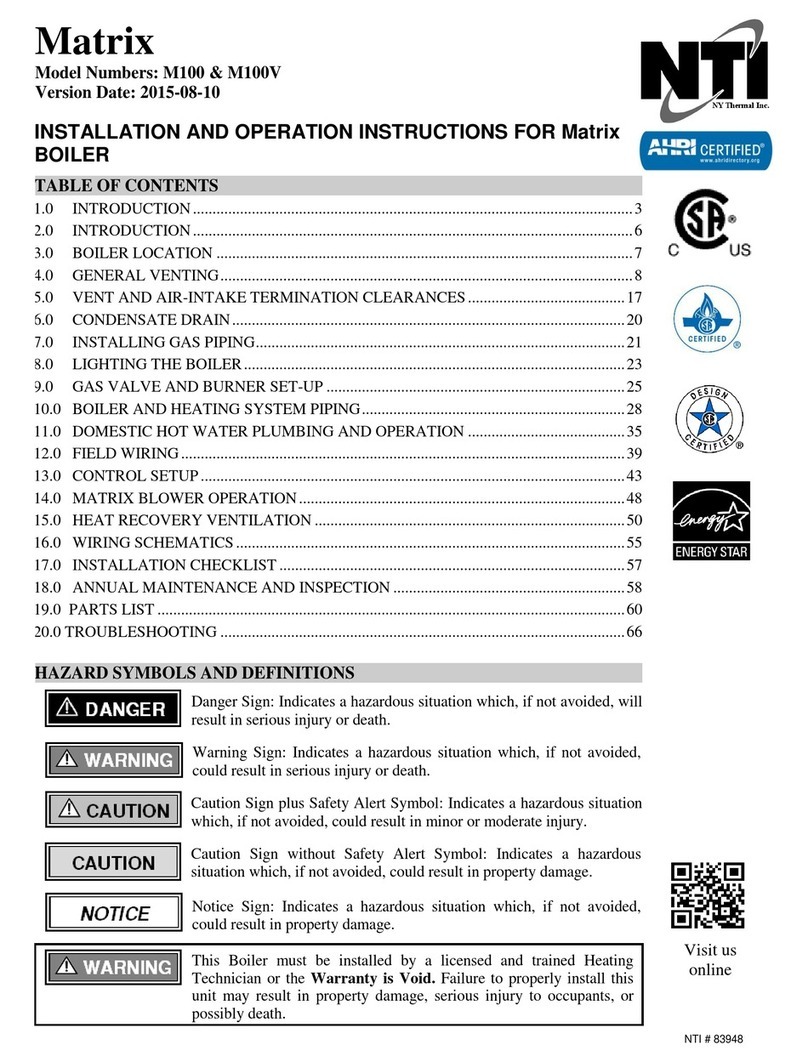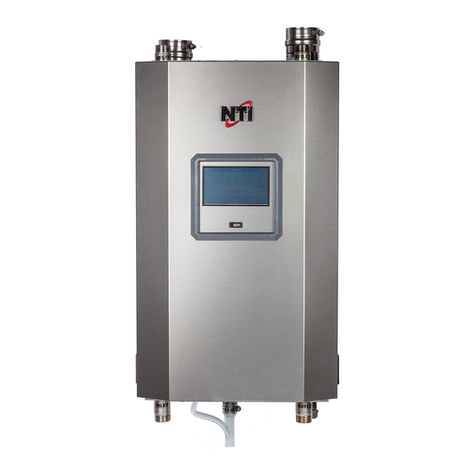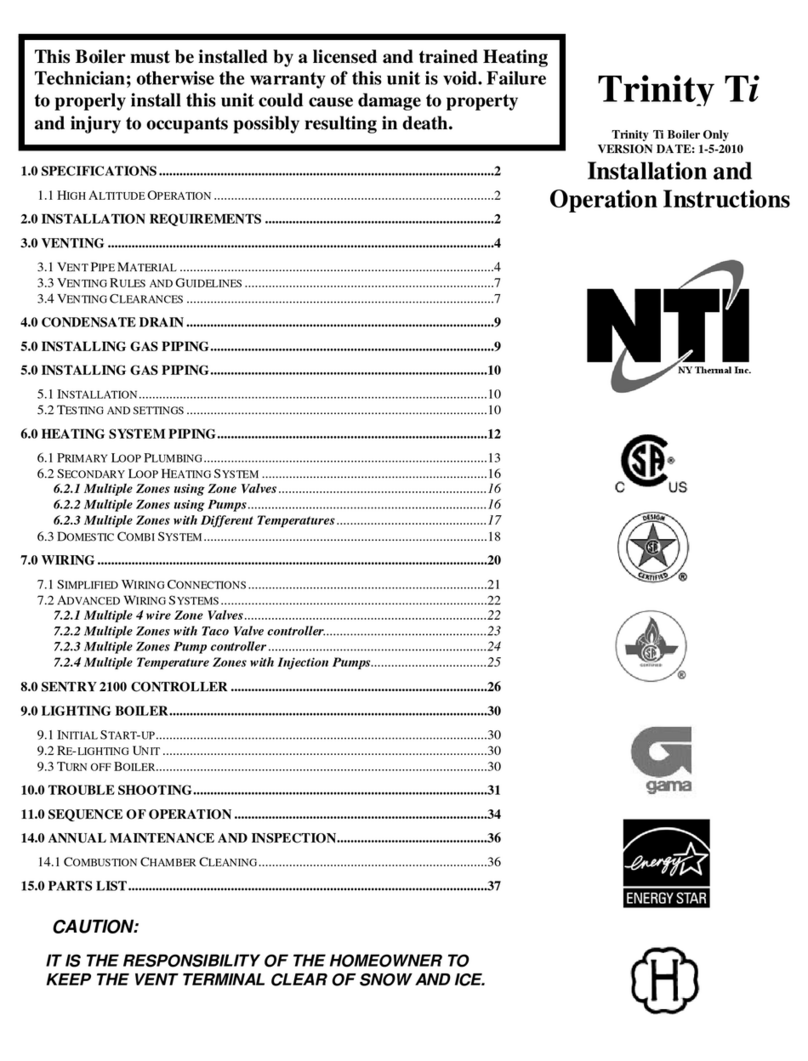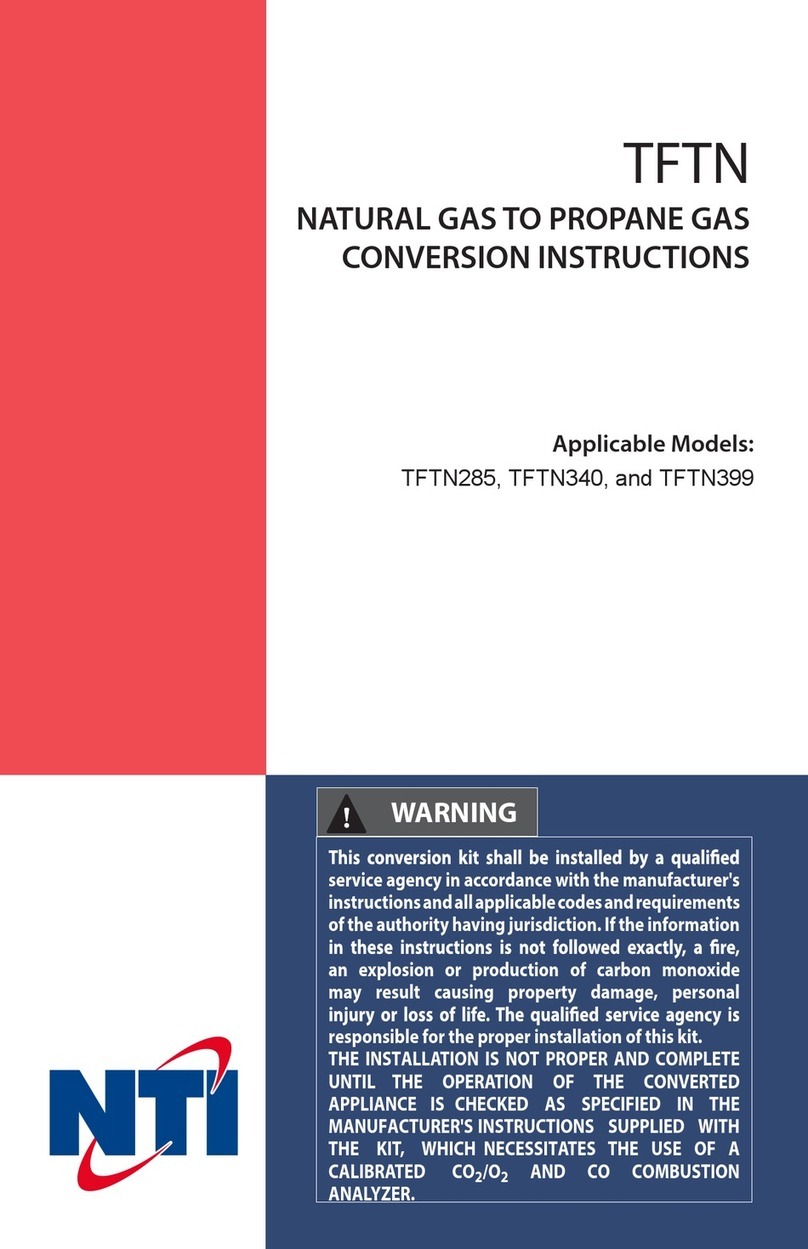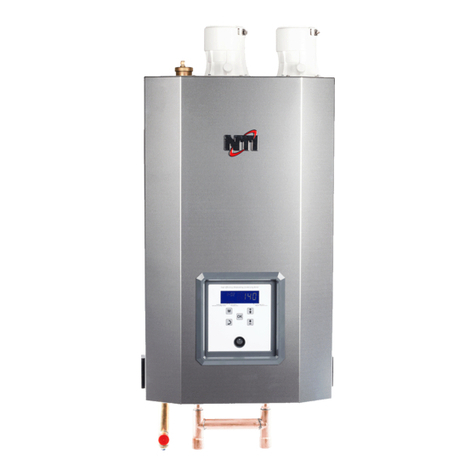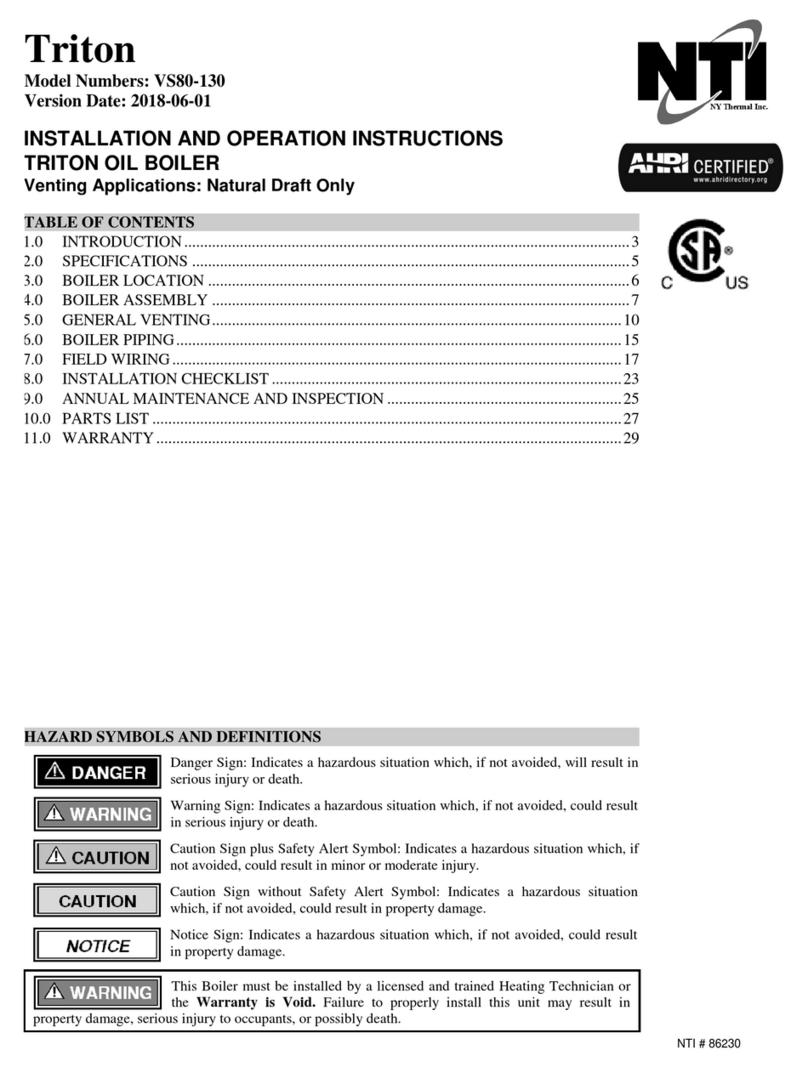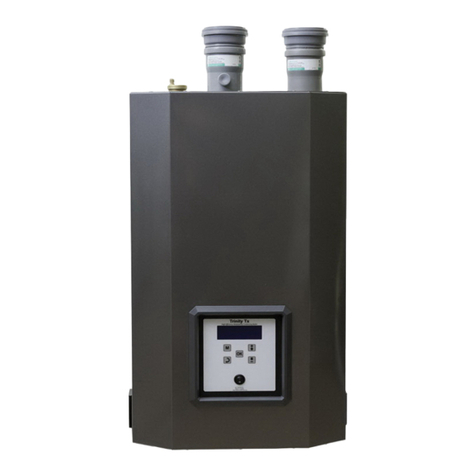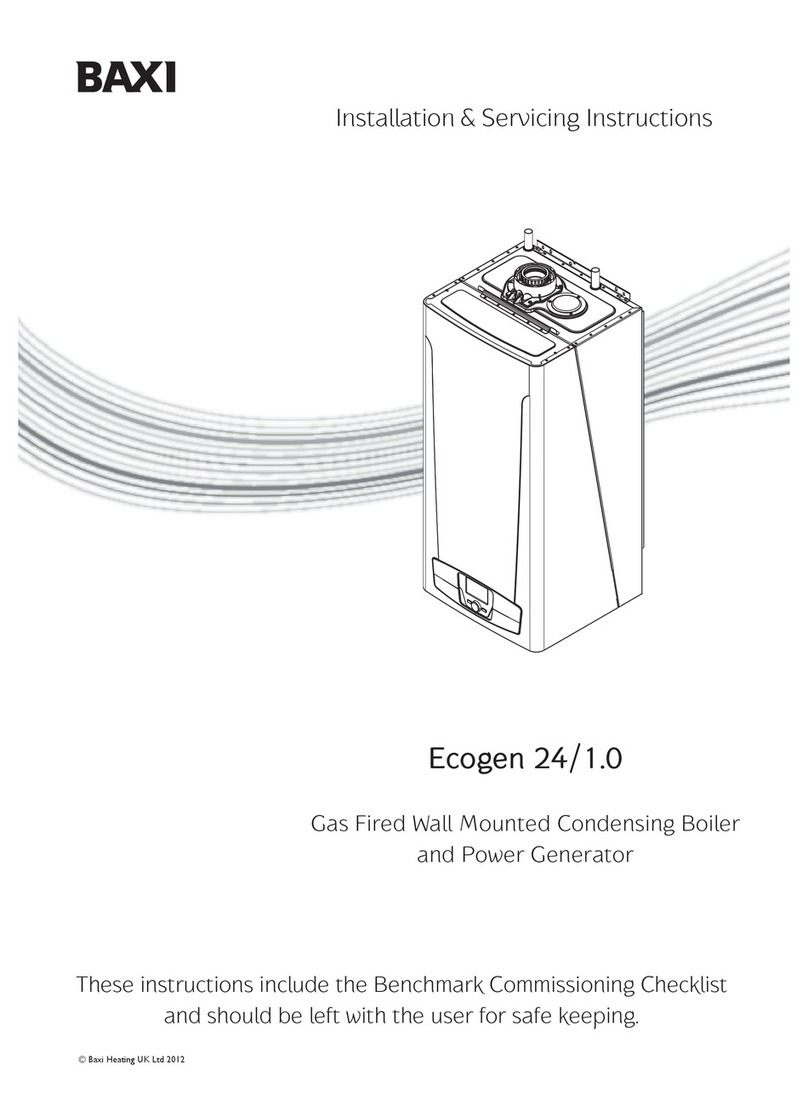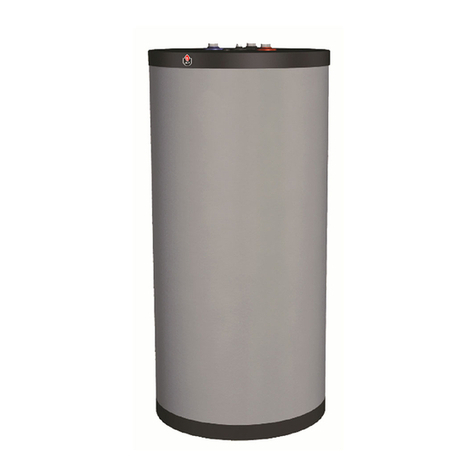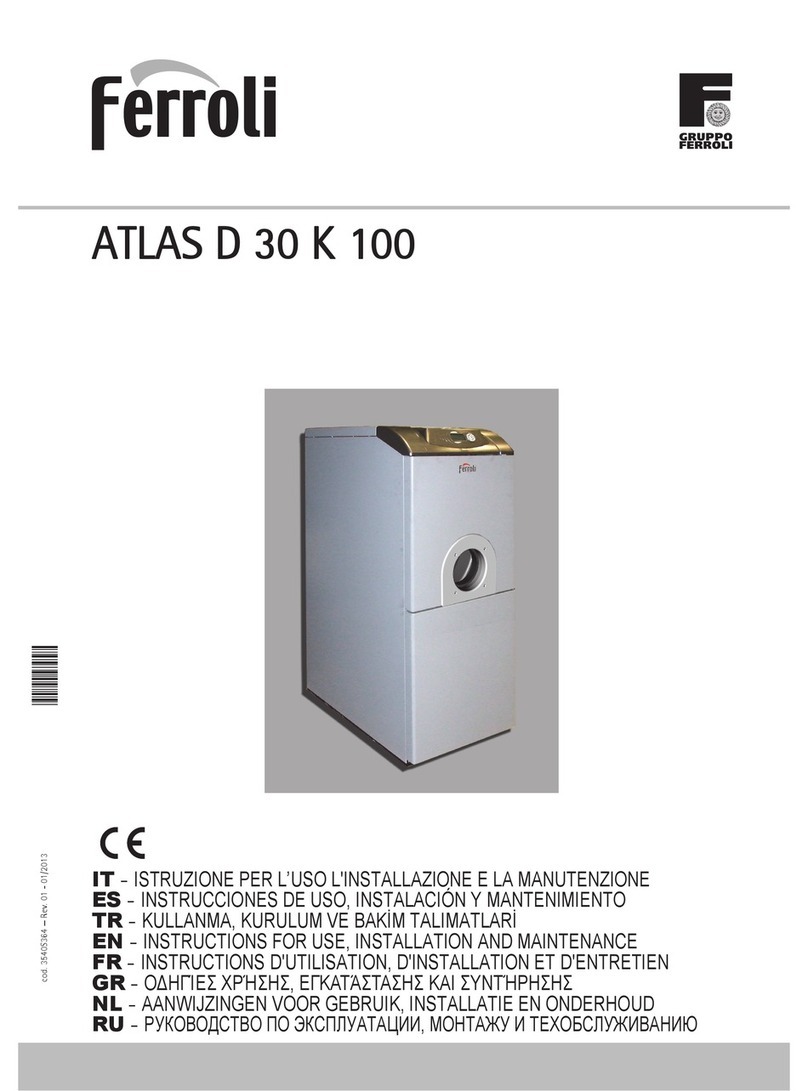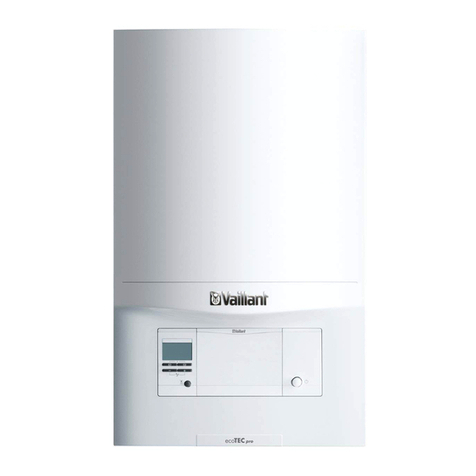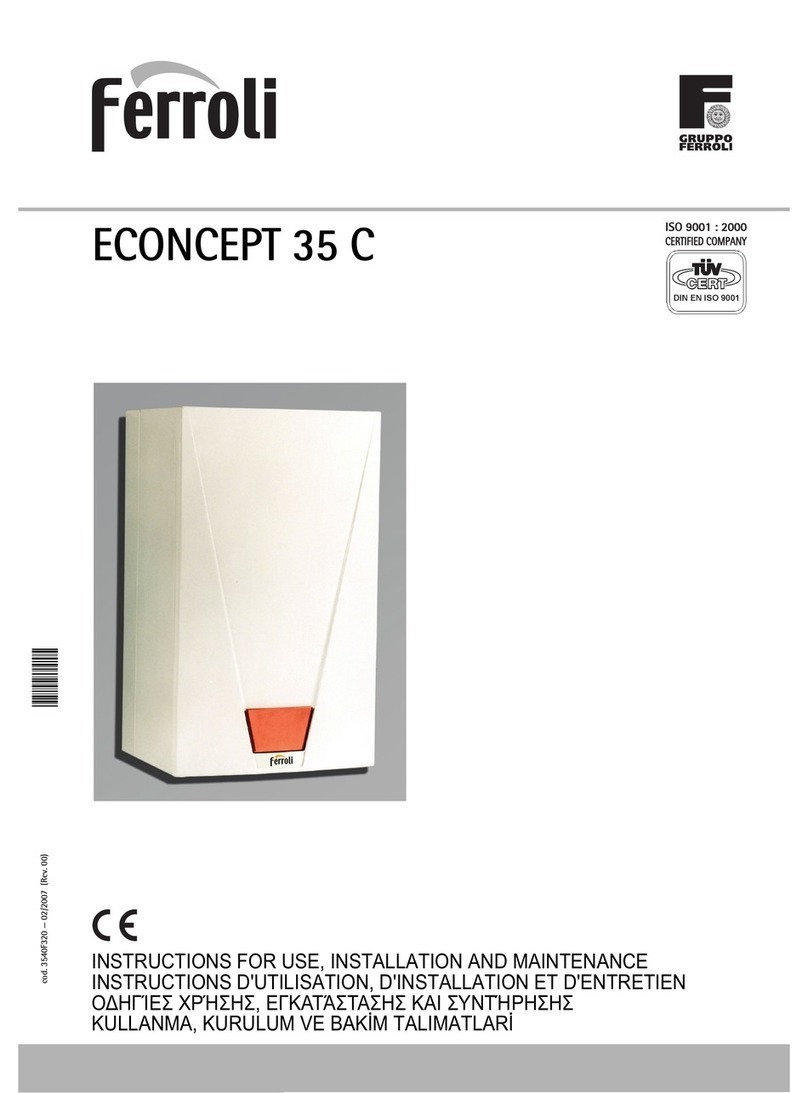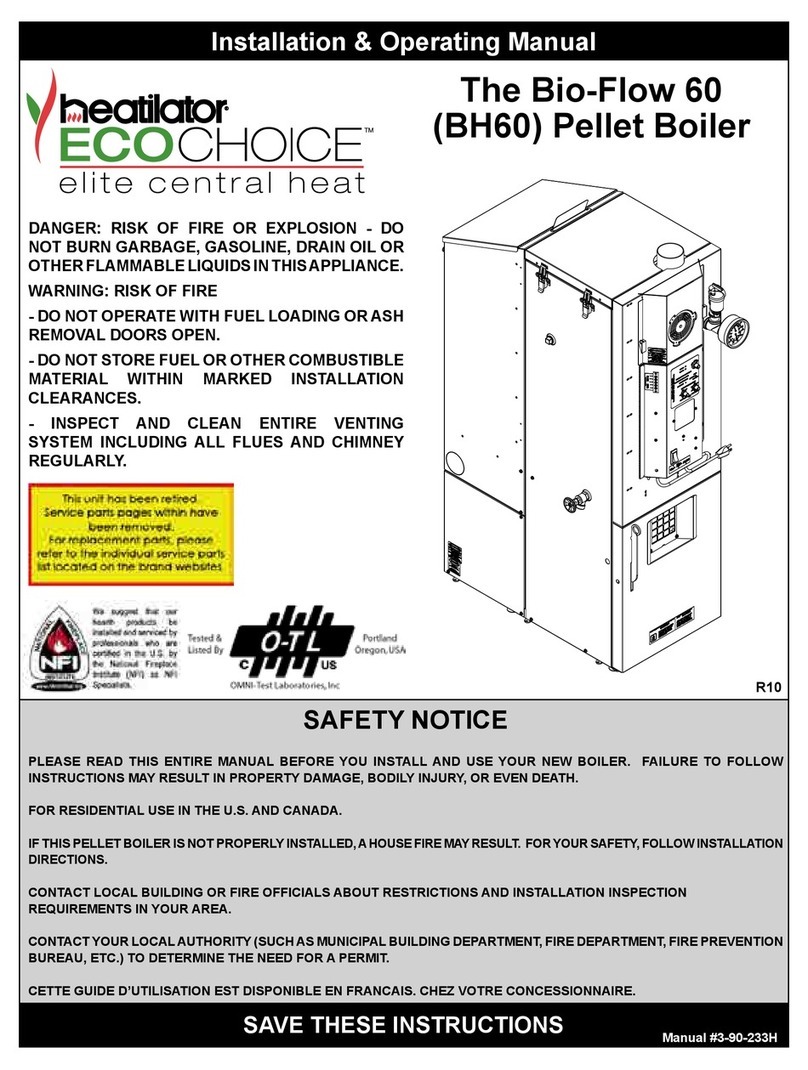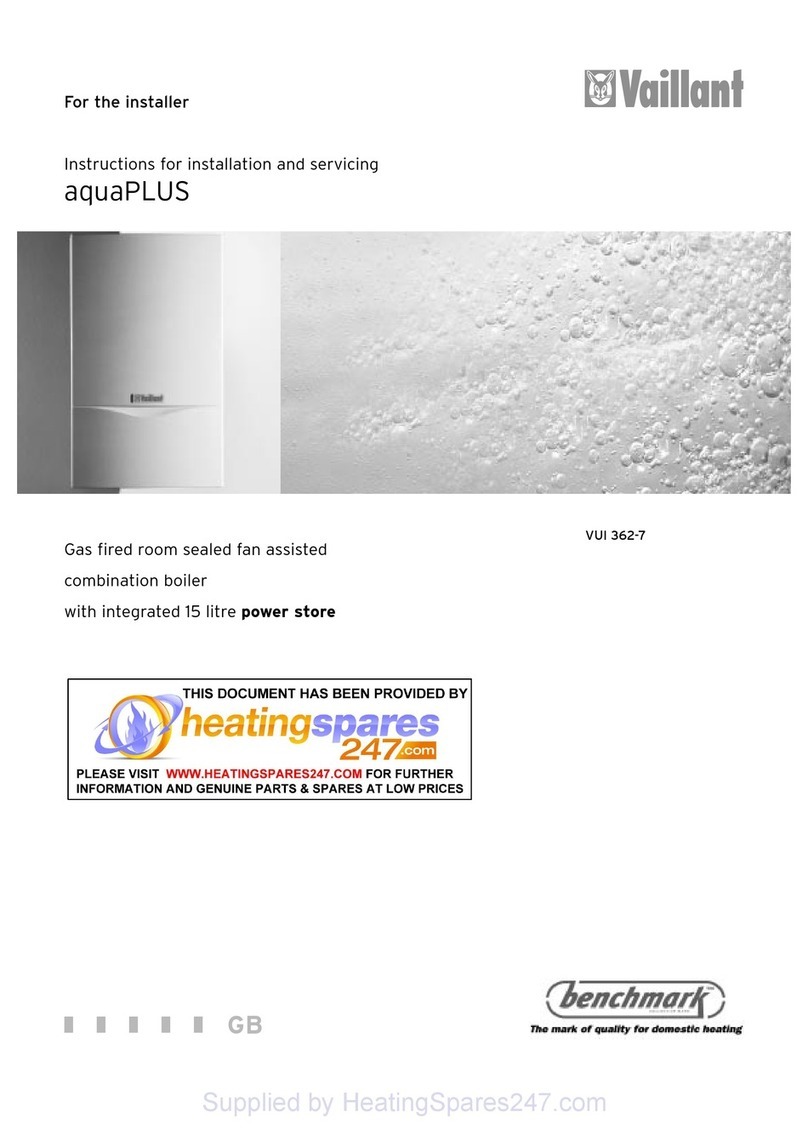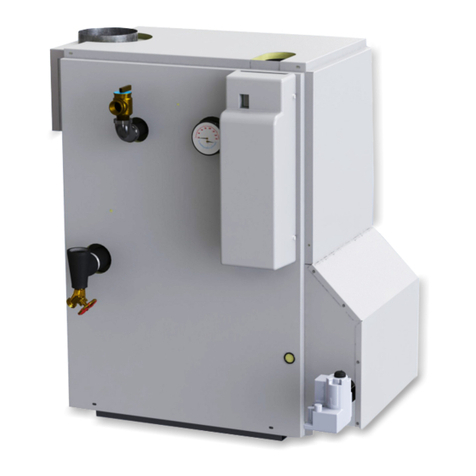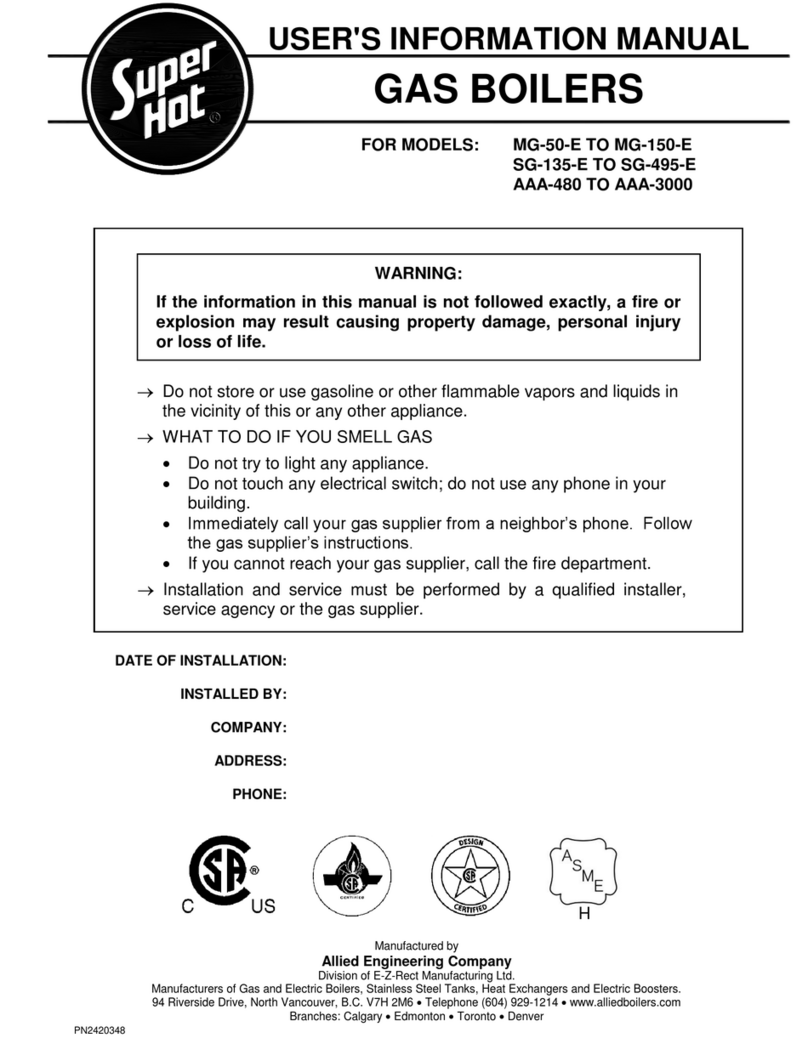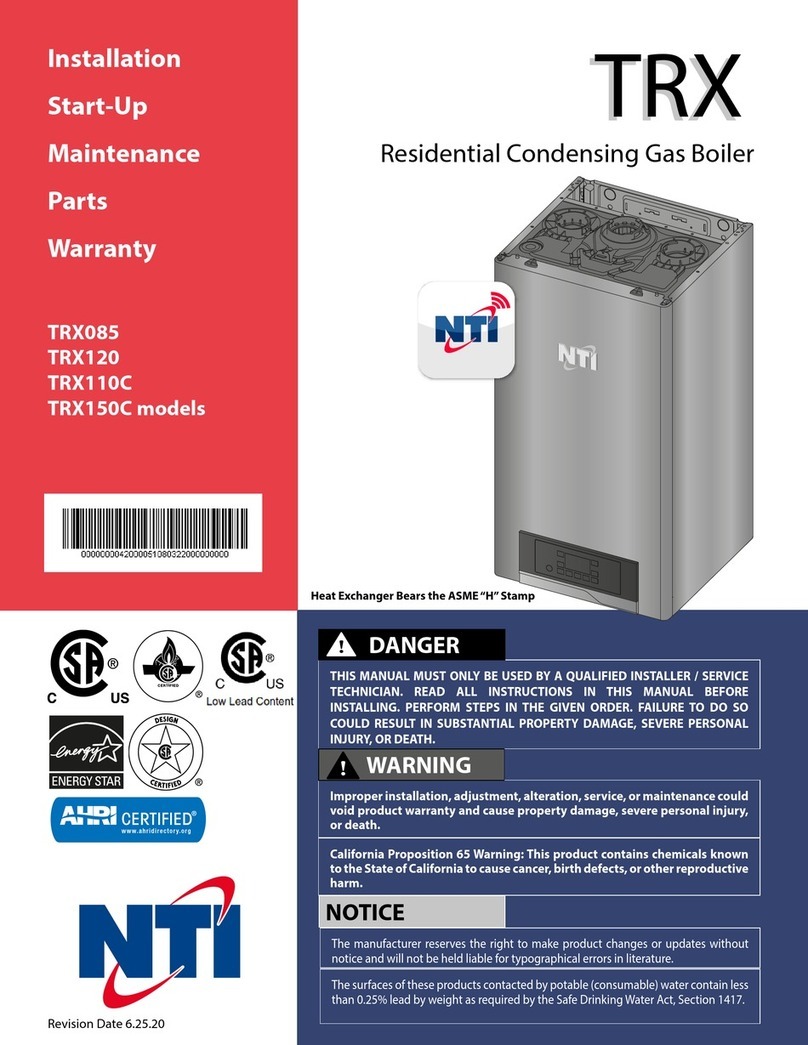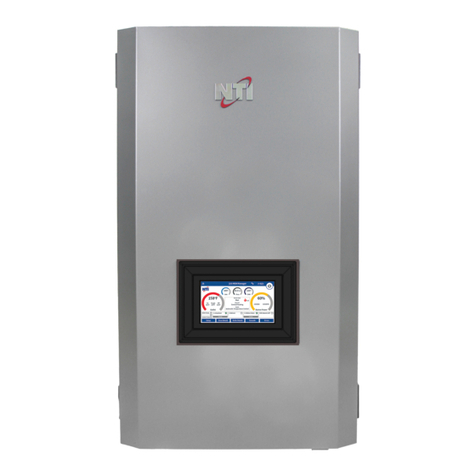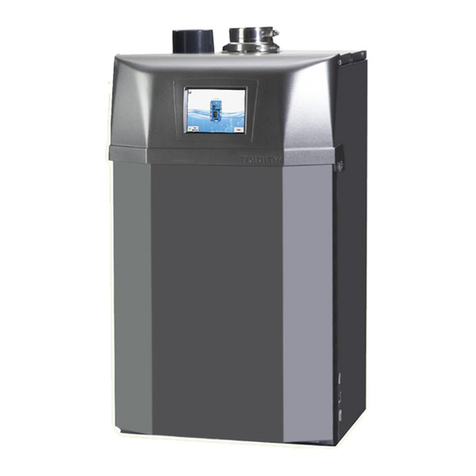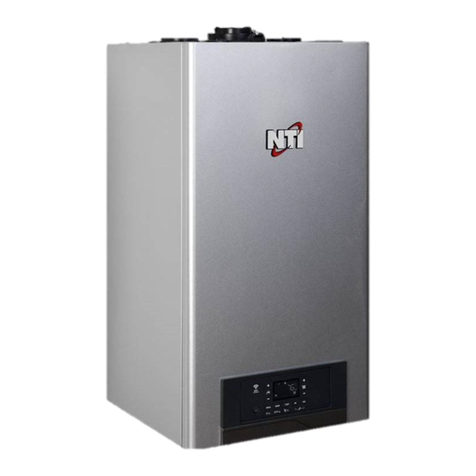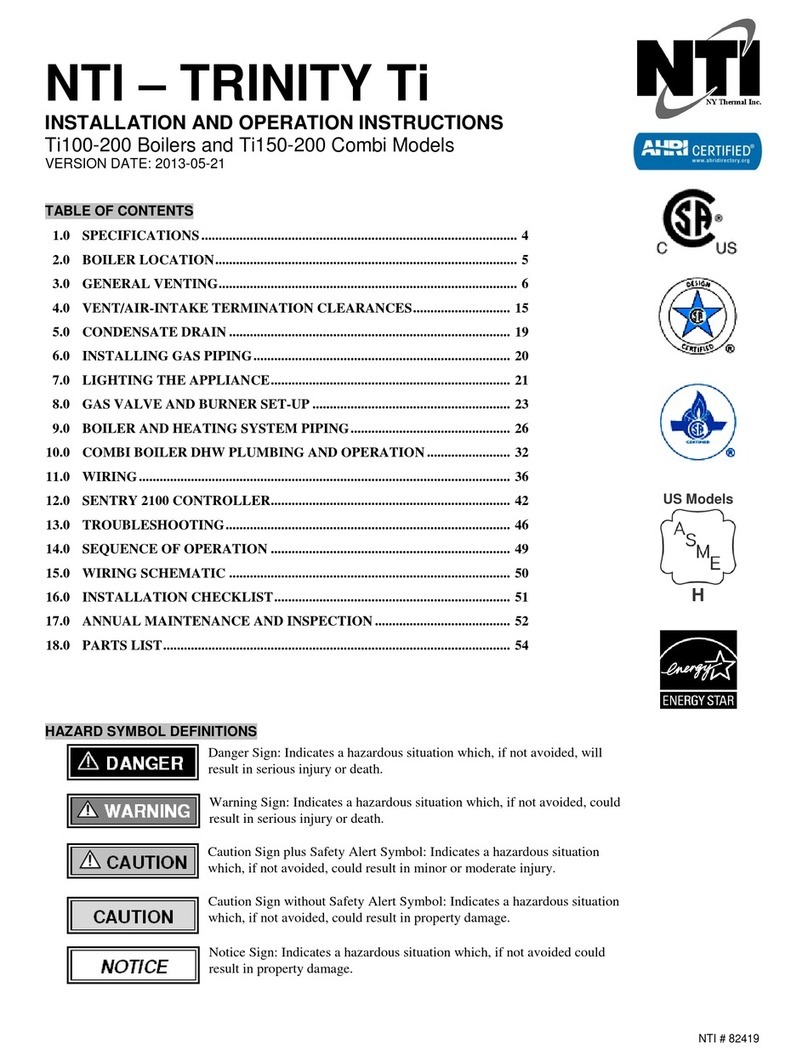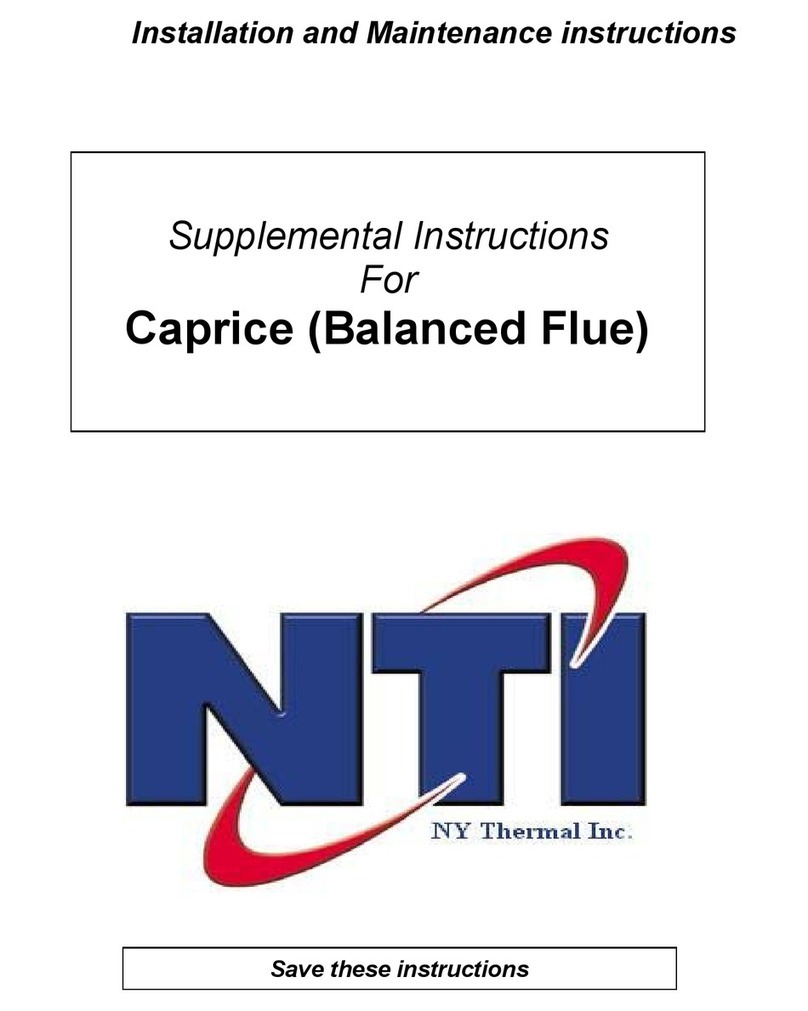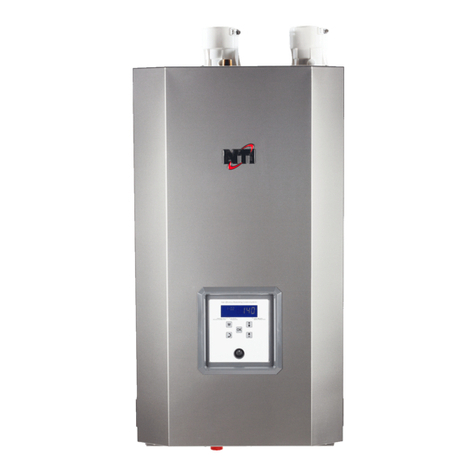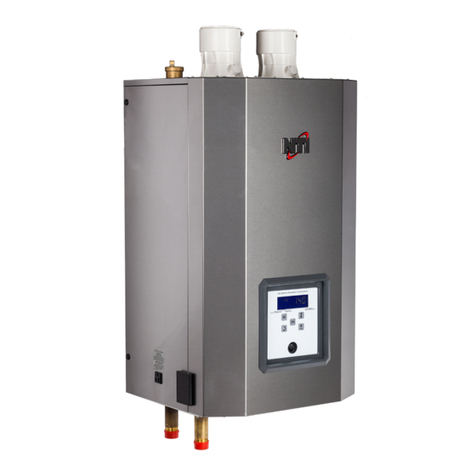
3
Gas Line Pressure
The boiler gas valve is equipped with a line pressure test port; see Figure 1-1. Use the following procedure to
measure the gas line pressure to the boiler to ensure if falls within the range given in Table 2-1:
1. Turn the supply of gas to the boiler off.
2. Using a 3/16 in. hex wrench, remove the plug from the flange located at the inlet of the gas valve, identified as
Line Pressure Test Port in Figure 1-1. In place of the plug, install a 1/8 NPT x hose barb adapter, suitable for
connecting the tubing of the gas pressure manometer being used to measure gas line pressure.
3. Slide the gas pressure manometer tubing over the hose barb adapter installed in step 2; connect the other end of
the tubing to gas pressure manometer. Ensure both ends of the tubing make a tight connection.
4. Open the supply of gas to the boiler and check for gas leaks.
5. Observe the line pressure under static conditions and compare it to Table 2-1. The pressure will be greatest under
static conditions.
6. With all other gas appliances in the application running, operate the burner to the maximum firing rate (see Table
2-2) and compare the observed line pressure with Table 2-1. The pressure will be lowest during the maximum
flow of gas.
7. Adjust the gas line pressure to ensure the parameters in Table 2-1 are attained under all conditions (see NOTICE
below). If possible adjust the line pressure to the "Nominal/Desired" value listed in Table 2-1, while the unit is
operating at the maximum modulation rate, see Table 2-2.
8. Continue observing the gas line pressure until the completion of the combustion analyses, in case adjustments
need to be made.
9. Complete pressure testing, turn the gas supply off, and then reinstall the Line Pressure Test Port plug, applying
appropriate thread sealant to the threads prior to installing. Turn gas on and check for leaks.
The line pressure is a function of the gas supply and is affected solely by field provided
parameters such as line size and regulator settings. Under no circumstances can the boiler gas
valve influence or be used to adjust the gas line pressure.
Failure to properly install the Line Pressure Test Port plug will cause a severe leakage of gas,
resulting in a fire or explosion causing property damage, serious injury or death.
Table 2-1 Line Pressure and Combustion Parameters
Line Pressure (inches w.c.)
Notes:
1Combustion calibration must only be performed with the burner operating at maximum modulation rate.
2Combustion values listed are for burner operation at maximum modulation rate; CO2 and CO values will be lower at
minimum modulation rate.
3When tested at minimum modulation rate, the CO2must be 0.5-1.0% lower than CO2at maximum modulation rate.
Table 2-2 Minimum and Maximum Modulation and Input Rates
Min. Modulation Rate (RPM)
Max. Modulation Rate (RPM)
* Canada: Altitudes between 2000-4500 ft, de-rate by 10%. Consult local authorities for de-rating for altitudes above 4500ft.
Carbon Monoxide - Never leave the unit operating while producing Carbon Monoxide (CO)
concentrations in excess of 175ppm. Failure to follow this warning may result in serious
injury or death.
Manifold Pressure - DO NOT adjust or measure the Manifold Pressure of the boiler. Correct
manifold pressure is factory set. Field adjustment could result in improper burner operation
resulting in fire, explosion, property damage or death.
Adjustments to the Throttle/Input Adjustment Screw may only be made by a qualified gas
technician, while using a calibrated combustion analyzer capable of measuring CO2and CO.
Adjustments may only be performed if the gas line pressure is maintained above minimum
levels throughout the duration of the test, see Table 2-1. Failure to follow these instructions
may result in serious injury or death.
